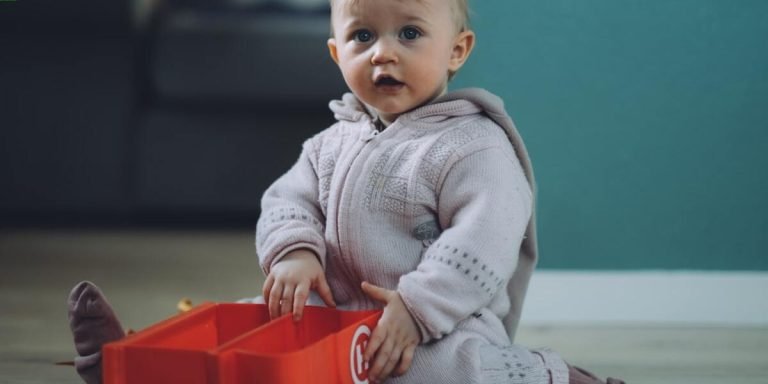What Qualifies a Child for an IEP: Understanding Eligibility Criteria
Understanding the eligibility criteria for an Individualized Education Program (IEP) is crucial in securing quality education for a child who requires additional learning support. The question often asked by parents and educators alike is, “What qualifies a child for an IEP?” This program offers tailor-made educational experiences that traditional classrooms might not completely provide.
In this article, we’ll delve into understanding what constitutes eligibility within the context of early childhood education. We aim to clarify jargon and detail key components so you can confidently navigate whether your youngster or student aligns with these specific requirements.
Did you know?
Did you know? The National Center for Education Statistics reports that almost 7 million students in the U.S received special education services under the Individuals with Disabilities Education Act (IDEA) in 2018, and a significant proportion of these may have qualified through an Individualized Educational Plan (IEP).
Understanding the Basics of Individualized Education Programs (IEPs)
The qualification for an IEP isn’t purely based on medical diagnosis but leans heavily into how much a disability affects educational performance. For instance, two kids could have similar conditions yet one might qualify because her condition substantially impedes her progress while the other doesn’t.
Moreover, teachers and parents should understand that qualifying for an IEP involves more than having difficulties grasping academic concepts; it encompasses speech impairments, emotional disorders and other challenges affecting school activities like attention deficit hyperactivity disorder (ADHD). It’s essential to open up conversations about these nuances when discussing qualifications so as not to limit our understanding only within traditional bounds.
Defining IEP and Its Purpose in Early Childhood Education
An Individualized Education Program, commonly known as an IEP, is a unique plan developed to ensure children with identified disabilities receive personalized and appropriate teaching methods. It’s formed in response to the question: what qualifies a child for an iep? The answer lies in understanding that every child learns differently, particularly those who may have specific educational needs due to various disability conditions.
One might ask why are IEPs important in early childhood education? They serve a crucial role by defining targets and setting out strategies designed around each child’s abilities while considering their challenges. In essence, it allows young learners’ growth at their own pace under tailored guidance rather than adhering strictly to conventional curriculums which can be overwhelming or ineffective for some kids.
IEPs not only focus on academic goals but also on developmental milestones often overlooked but integral such as social skills development or motor skill enhancement. These factors collectively contribute towards creating inclusive learning environments promoting equality among diverse learners – making them feel valued and capable of success regardless of any physical or mental impairment they contend with.
What determines whether your toddler needs specialized intervention? Several factors play a role in deciding if a child qualifies for an IEP:
The Role of Assessments in Determining IEP Eligibility
The role of assessments in determining a child’s eligibility for Individualized Education Programs (IEPs) is crucial. It all begins with understanding what qualifies a child for an IEP and the importance of assessment.
In early childhood education, identifying any potential learning difficulties or disabilities as soon as possible can make significant differences in your child’s development. A standard procedure to identify these needs is through comprehensive assessments conducted by professionals like psychologists, therapists, and educators.
Typically, under the Individuals with Disabilities Education Act (IDEA), certain specific conditions may qualify a youngster for an IEP. These encompass categories such as autism spectrum disorder, visual impairments including blindness, speech or language impairment amongst others.
When suspicions arise about developmental delays or unusual behavior patterns are observed in children at home or school setting; it often triggers initial evaluations that lead up to full-scale assessments recognized by IDEA 2004 guidelines – this serves to identify whether the youngster meets criteria qualifying them specifically into one category mentioned above which could necessitate formulating their tailored educational plan known commonly today across US schools as “Individualized Education Plan” OR “IEP”.
Key Criteria for Qualifying a Child for an IEP
An Individual Education Program (IEP) is an essential tool designed to provide a tailored learning experience for children with special needs. Parents and educators might wonder about the key criteria that qualifies a child for such assistance. As of 2023, The Individuals with Disabilities Education Act (IDEA), which governs IEPs, outlines certain conditions under which children become eligible.
Specifically, IDEA describes thirteen categories of disabilities that can qualify a kid for an IEP – these include autism spectrum disorder, deafness or blindness among others. However, having one or more such disability does not automatically grant qualification; there’s another equally important criterion – the disability must affect the child’s educational performance adversely.
Recognizing Developmental Delays and Disabilities in Young Learners
Firstly, it involves observing children closely in different environments. They may behave differently at home than they do at school or during social activities outside these settings. Parents should look out for any challenges their kids face while interacting with others of their age group.
Children might qualify for an IEP if they display difficulties across various areas including speech and language skills, cognitive development, emotional behavior controls as well as motor skills such as walking or grasping objects. These issues could present themselves independently but often overlap leaving impacts on multiple aspects of the child’s life.
Specifically regarding linguistic capabilities; slow vocabulary build-up compared to peers can signal potential delay on this front. Children also typically demonstrate progress by forming simple sentences around three years old – inability here might be cause enough to initiate further exploration into whether specialized help through an IEP would benefit them.
Cognitive development matters add another dimension – if your young one struggles with understanding instructions or problem-solving tasks that are usually manageable by other same-aged children OR shows lack of curiosity/enjoyment from learning new things then perhaps additional professional insights would prove helpful here too.
Legal Requirements: IDEA’s Categories of Disability
In the journey of understanding what qualifies a child for an individualized education program (IEP), it is pivotal to perceive the key legal requirements laid by The Individuals with Disabilities Education Act, widely known as IDEA. This federal law ensures that children with disabilities have access to free and appropriate public education tailored specifically according to their needs.
The IDEA specifies 14 categories for a child’s eligibility for special educational services or IEPs as follows:
1. Autism: If your little one exhibits difficulties in social interactions, verbal and nonverbal communication along with repetitive behaviors – this could qualify them.
2. Deaf-blindness: A simultaneous hearing and visual impairment leading to severe communication issues may also make a child qualified.
3. Development Delay: Noted delays across multiple areas such as physical development, cognitive skills, speech & language might hold relevance.
4. Emotional Disturbance: Ongoing problems related emotional stability affecting academic performance often form part of consideration.
Navigating the IEP Process: Steps to Advocate for Your Child’s Needs
The Individualized Education Program, commonly known as the IEP process, can appear complex and intimidating to parents who are just beginning their journey of advocating for a child’s special educational needs. However, being well-informed about what qualifies a child for an IEP in 2023 is paramount.
An understanding of the qualifying conditions starting from early childhood education phase will empower you to champion your young one’s rights effectively. It’s essential that parents recognize that any disability which hinders a child’s learning ability may qualify them for an IEP; these disabilities range widely from communication disorders and auditory impairment to cognitive or emotional disturbances.
A vital thing for every parent to know is that an IEP (Individualized Education Program) qualification doesn’t just stem from a diagnosis of certain conditions. It also considers how these conditions affect each child’s academic performance. If your child shows a significant gap in academic achievement compared to their age and grade peers—and a disorder or affliction primarily causes this gap—they likely qualify under the IDEA act (Individuals with Disabilities Education Act). This act ensures equal access to free public education services customized for each learner’s unique needs.
Preparing Documentation and Evidence for the Evaluation Meeting
Starting your journey on “what qualifies a child for an IEP” could feel overwhelmingly complex. However, preparing documentation and evidence in anticipation of the evaluation meeting is vital to ensuring that your youngster’s needs are appropriately addressed.
Firstly, you need to gather all important medical records pertaining to your child’s situation. This may include diagnoses from doctors or practitioners who’ve worked with them over time – neurologists, psychiatrists, psychologists etc., whose input can provide concrete proof of their learning challenges.
Next up is assembling any previous academic performance records if available. Report cards, state assessments results and other scored assignments can be pivotal information sources during this process as they give clear insights into where children might be struggling acadically.
Thirdly, it would be useful for you to bring along work samples illustrating attention issues or problematic areas observed at home such as difficulties with organization skills- think messy notebooks & incomplete homework assignments!
Another important document includes notes taken by teachers documenting instances when academic struggles became apparent– perhaps through consistent difficulty comprehending certain concepts/materials in class despite extra help provided by educators themselves?
Collaborating with Educators and Specialists During the Planning Phase
Collaborating with educators and specialists during the planning phase of your child’s Individualized Education Program (IEP) is an integral part of advocating for your child’s needs. Understanding “what qualifies a child for an IEP” helps you actively participate in shaping their educational journey.
Initiating this collaboration starts by identifying the unique strengths, challenges, and preferences that qualify your youngster for specialized support. Comprehensive evaluations play a crucial role here as they help to pinpoint specific areas where assistance might be required. From thereon, it’s about working cohesively with professionals who can contribute towards crafting a robust plan – one that aligns seamlessly with your little one’s learning style while addressing any identified gaps comprehensively.
Sharing detailed insights regarding behavior patterns at home or particular difficulties encountered warrants prime importance too; such first-hand information assists educators in designing tailored strategies. Equally important is keeping abreast of updates on legislation concerning IEP programs; laws evolve over time, especially given us currently residing in 2023 when newer regulations are continually being introduced.
Communicating regularly ensures no vital detail is overlooked along the way – from drafting goals to choosing appropriate approaches or measuring progress periodically against set benchmarks. Such active participation conveys how committed you remain towards ensuring every facet meet those distinctive requirements adequately embodied within each ‘I’ representing ‘individual’ reflected through these special plans called ‘IEPs’.
Conclusion
In the vast constellation of childhood education, understanding what qualifies a child for an IEP is akin to spotting the North Star – it helps guide and illuminate your journey. Hopefully, you now have clear insight into how eligibility criteria works and can confidently navigate this often overwhelming process. Your knowledge base plays a pivotal role in advocating for your child’s academic growth where necessary.
Don’t let your curiosity end here though! We encourage our readers to continue exploring more on our site about various facets of educating children ranging from learning strategies to parent-educator communication techniques. After all, raising resilient learners takes continuous effort – we’re here with information-based support whenever you need us.







